Elegant Indian And Arabic Mehndi Designs
Mehndi Designs: The Artistic Tradition of Henna Body Art
Introduction:Mehndi, or henna, is an ancient and cherished form of body art that has captiva ... read more.
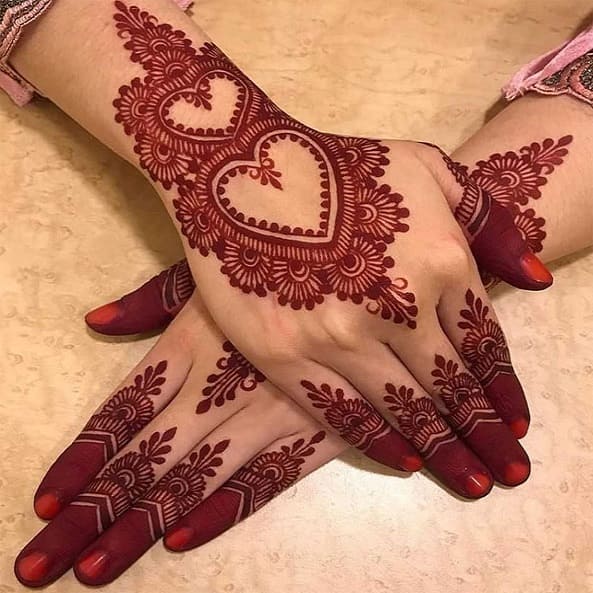
Mehndi Designs: The Artistic Tradition of Henna Body Art
Introduction:Mehndi, or henna, is an ancient and cherished form of body art that has captivated the imaginations of people across cultures and continents. The application of mehndi, which involves creating intricate and beautiful designs on the skin, holds a special place in Indian culture. It is a tradition that has evolved over centuries and continues to be a significant aspect of Indian rituals, celebrations, and everyday life.
Historical Roots of Mehndi:
The history of mehndi dates back thousands of years. Its origins can be traced to ancient India, where it was initially used for medicinal and cooling purposes due to hennas natural properties. Over time, the application of mehndi became an art form, with designs becoming more complex and detailed.
Cultural Significance:
Mehndi plays a pivotal role in various cultural and religious celebrations in India. One of the most prominent occasions for mehndi application is weddings. Bridal mehndi, in particular, is a grand and intricate affair. It symbolizes love, purity, and the beginning of a new chapter in the brides life. The application of mehndi on other auspicious occasions, such as festivals and Karva Chauth, also carries significant cultural meaning.
Regional Variations:
Indias diverse culture and traditions have given rise to a wide array of mehndi styles and patterns. Each region boasts its unique mehndi designs, incorporating local motifs, symbols, and techniques. Whether its the floral patterns of Rajasthan, the bold geometric shapes of Gujarat, or the fine lines of Hyderabad, mehndi designs reflect the rich tapestry of Indian heritage.
The Art of Mehndi Design:
Creating mehndi designs is a skilled and intricate art. Mehndi paste, made from the leaves of the henna plant, is applied to the skin in a decorative manner. The designs often include motifs like paisleys, flowers, peacocks, and intricate geometric patterns. The process is not only a visual spectacle but also a sensory experience, with the earthy scent of henna and the cooling sensation on the skin.
Modern Evolution:
Mehndi designs have not remained static but have evolved to incorporate modern trends. In recent years, there has been a fusion of traditional mehndi with contemporary styles, resulting in designs that are both classic and trendy. The emergence of Arabic and Indo-Arabic styles has added a new dimension to mehndi art, emphasizing minimalism and open spaces in the design.
International Appeal:
Mehndi has transcended its Indian origins to become a global phenomenon. It is now appreciated and practiced in various parts of the world. In the West, mehndi has become a popular form of temporary body art, often adorned at events, parties, and music festivals. The appeal of mehndi lies in its temporary nature, allowing people to experiment with different designs without long-term commitment.
Indian Style
Indian mehndi designs are intricate and decorative patterns created on the skin, typically on the hands and feet, using henna paste. These designs are an essential part of Indian culture, especially during weddings and festivals. Here are some popular Indian mehndi design styles:
Traditional Indian Mehndi Design: This style features intricate and densely packed patterns that cover the entire hand and sometimes extend up the arm. It often includes motifs like paisleys, flowers, and peacocks.
Bridal Mehndi Design: Bridal mehndi is usually the most elaborate. It includes depictions of the bride and groom, intricate patterns, and sometimes the names of the couple hidden within the design.
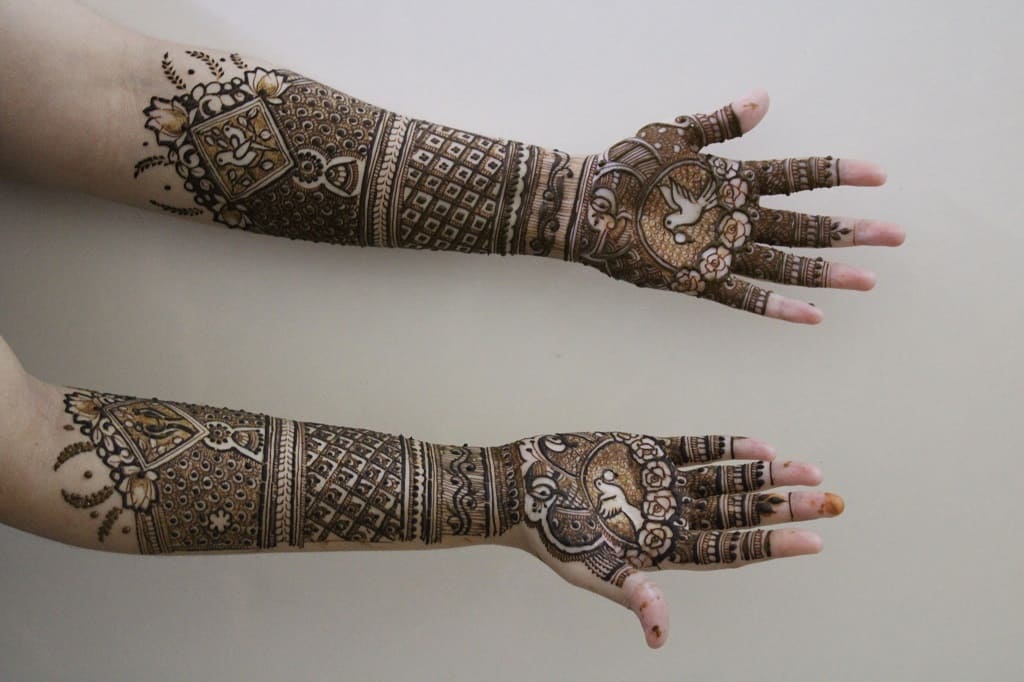
Rajasthani Mehndi Design: Originating in the state of Rajasthan, this style is characterized by bold, floral patterns and often includes depictions of elephants and other cultural elements.
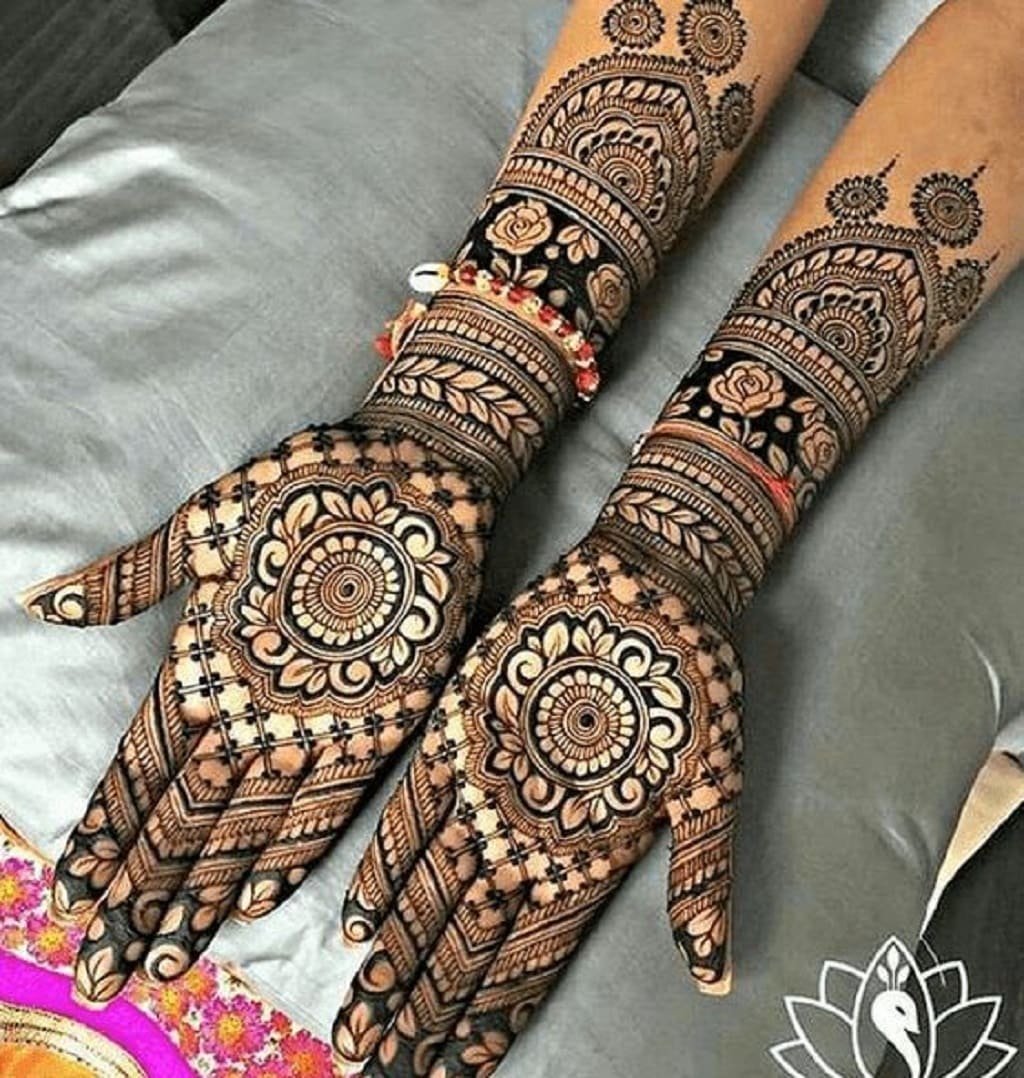
Marwari Mehndi Design: Similar to Rajasthani mehndi, Marwari mehndi features bold patterns with a focus on the bride and grooms portraits.
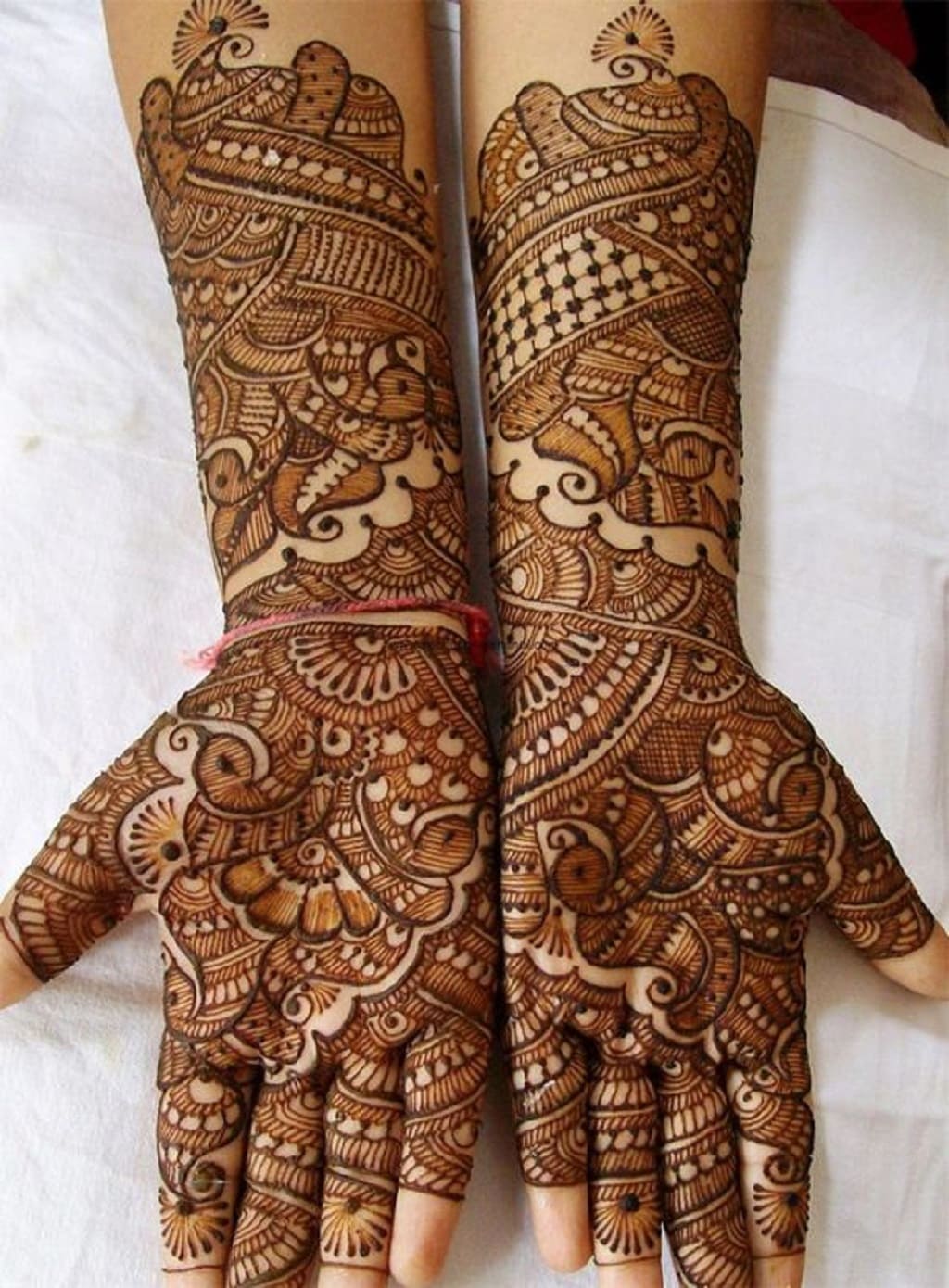
Pakistani Mehndi Design: This style has intricate patterns with a lot of shading and fine details. It often includes geometric shapes and floral motifs.
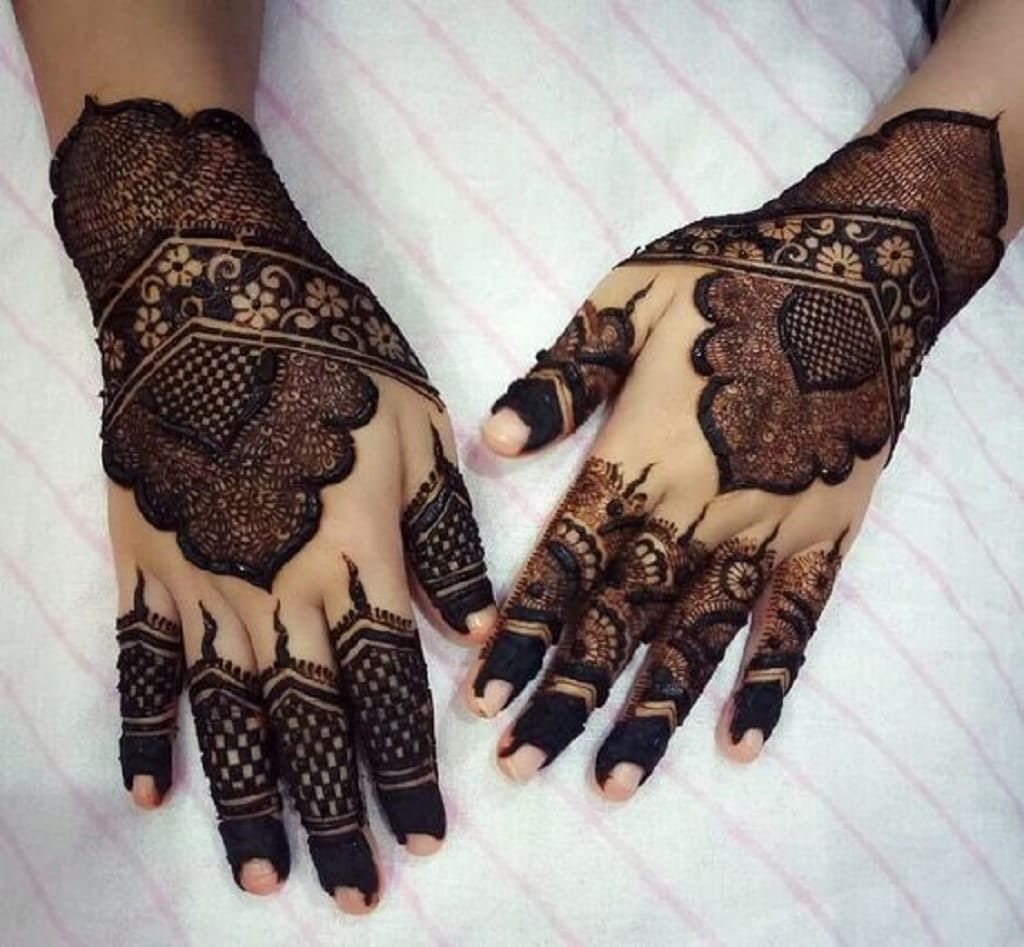
Arabic Mehndi Design: While not strictly Indian, Arabic mehndi designs have gained popularity in India. They are characterized by their bold, simple, and contemporary designs, often with a focus on the fingertips and a more open look.
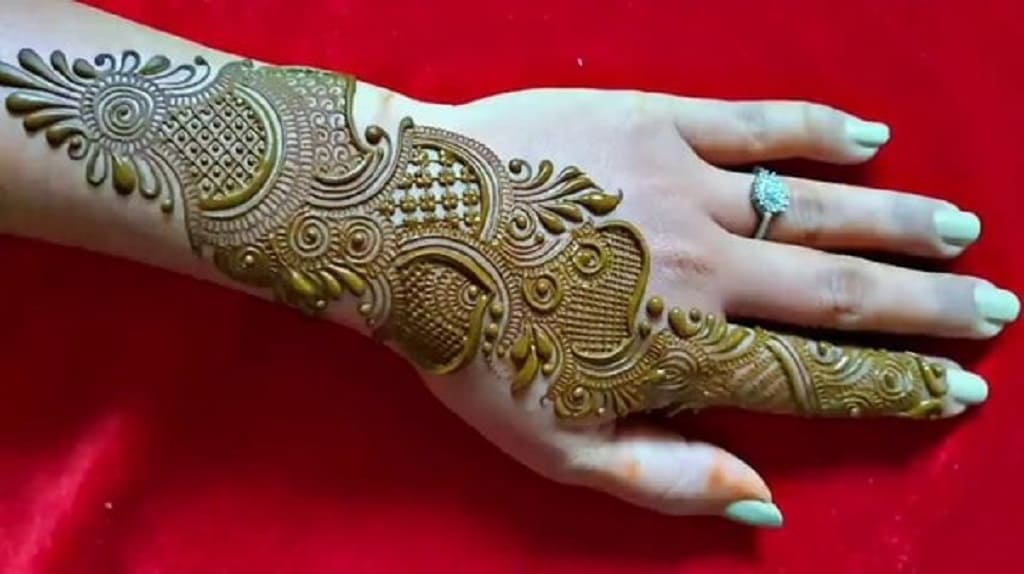
Gujarati Mehndi Design: This style is known for its checks and geometric patterns along with traditional motifs. Its less intricate compared to some other styles.
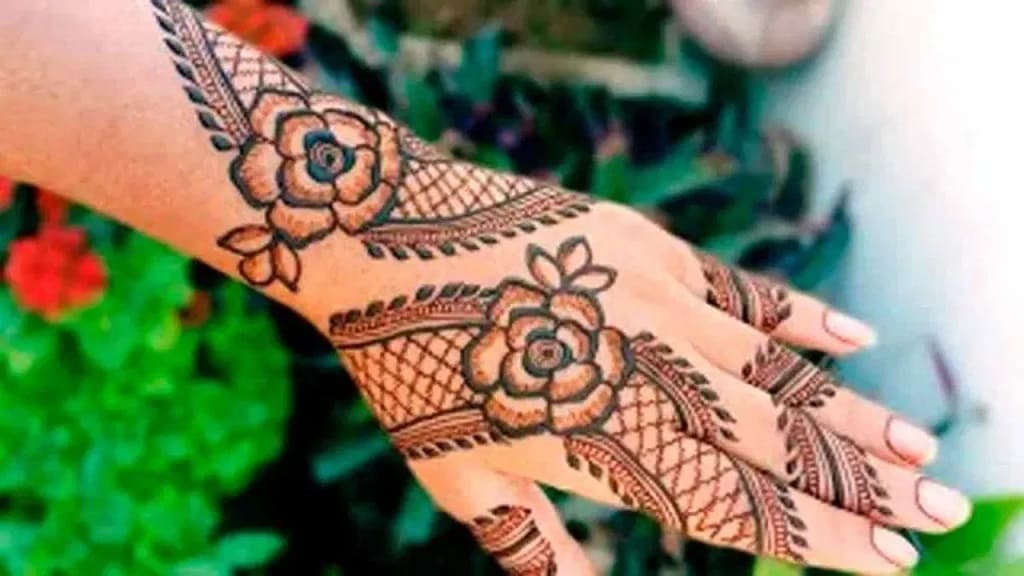
Mughlai Mehndi Design: Inspired by Mughal art and architecture, this style features intricate and symmetrical designs with elements like domes, arches, and lattice work.
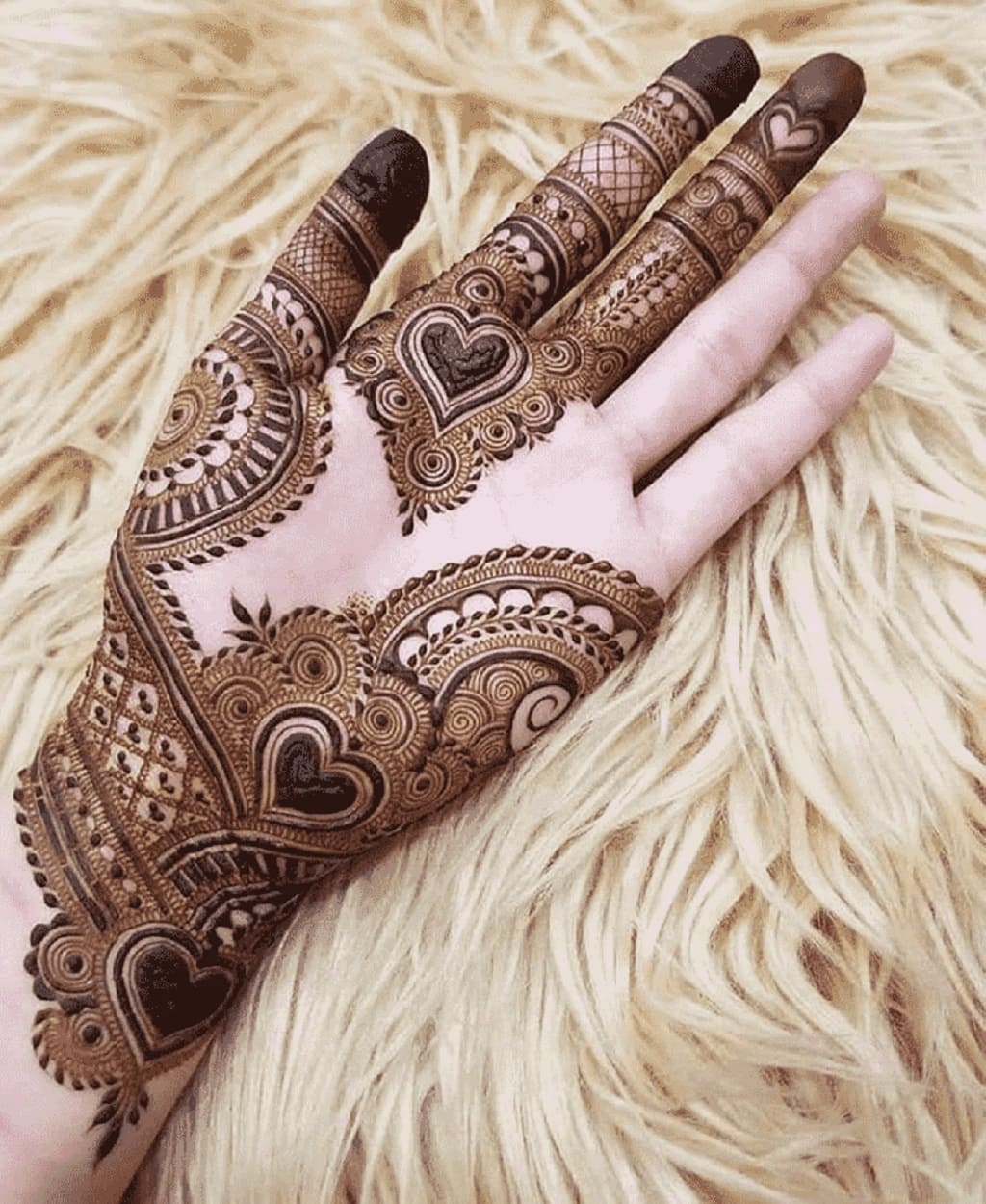
Hyderabadi Mehndi Design: Originating in the city of Hyderabad, this style includes a mix of Arabic and Indian designs with a focus on creating a delicate and intricate look.
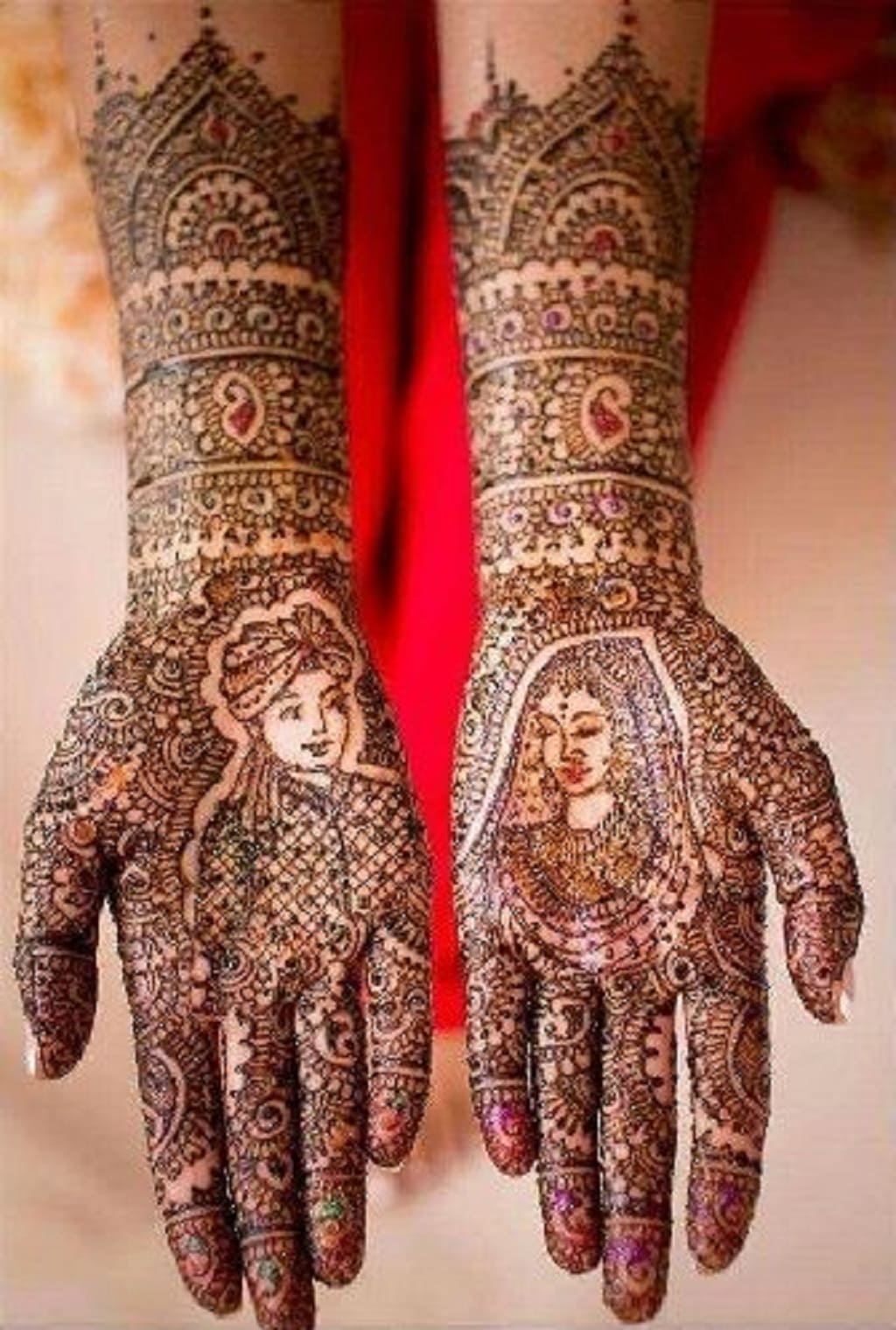
Kolkata Mehndi Design: This style often incorporates elements of the Bengali culture, including conch shells, fish, and the Bengali bride and groom
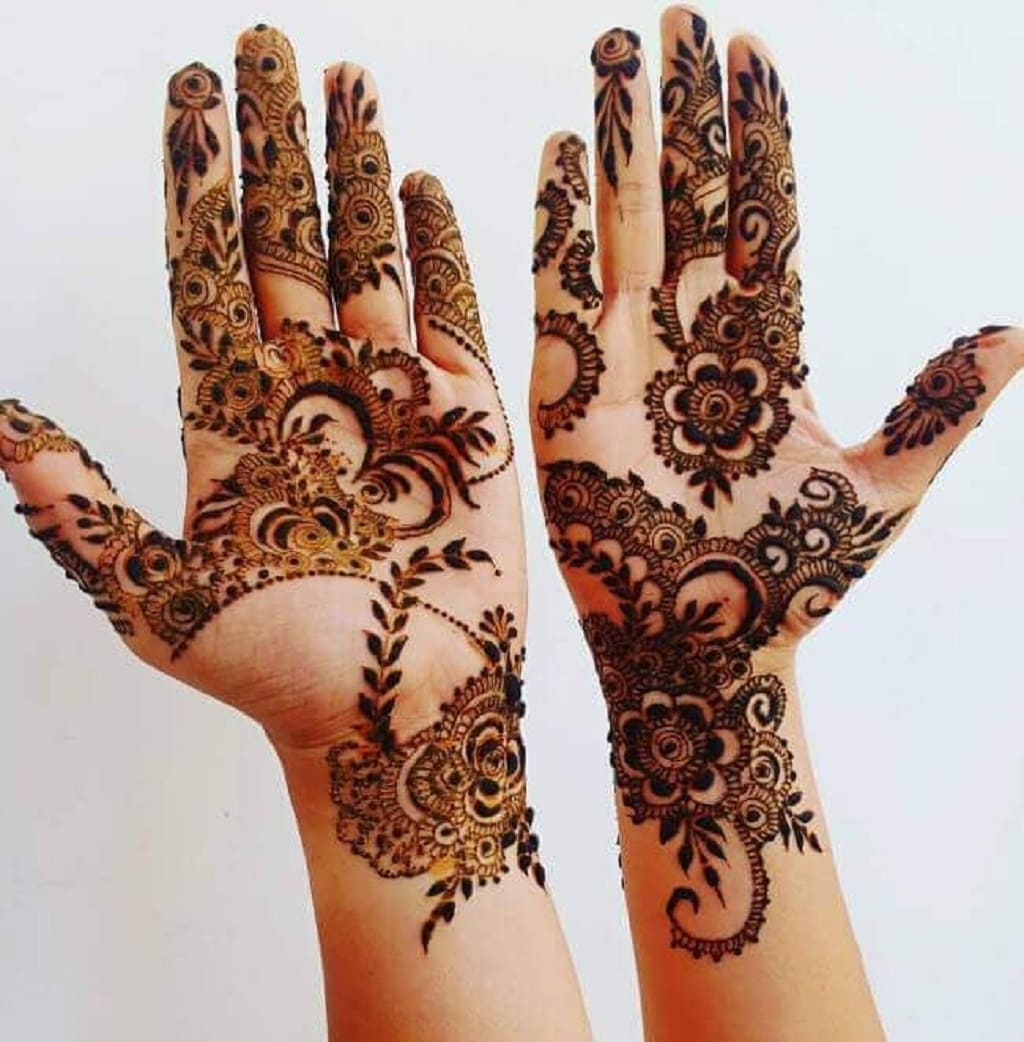
Arabic Style
Arabic style mehndi designs are characterized by their simplicity, elegance, and the use of negative space. Unlike some other intricate and densely packed mehndi designs, Arabic mehndi focuses on open spaces, bold lines, and a more contemporary look. These designs are popular not only in the Arab world but also in many other parts of the world due to their aesthetic appeal. Here are some key features of Arabic style mehndi designs:
Bold Lines: Arabic mehndi designs often feature bold and thick lines. These lines are prominent and give the design a more distinct look. The bold lines are used to create patterns and motifs.
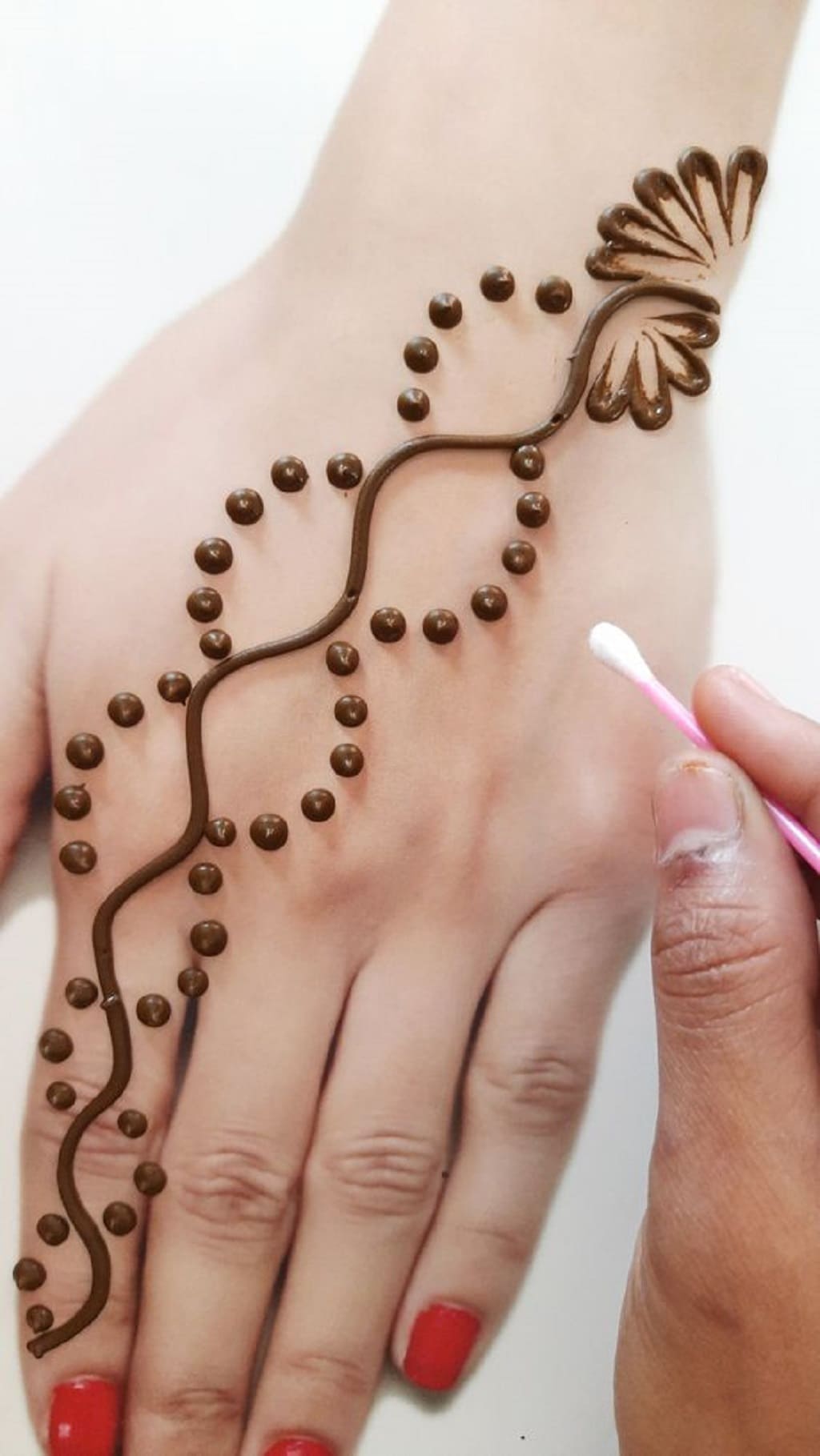
Floral Patterns: Floral motifs are a common feature in Arabic mehndi designs. These flowers can be large and prominent, and they are often used as central elements in the design.
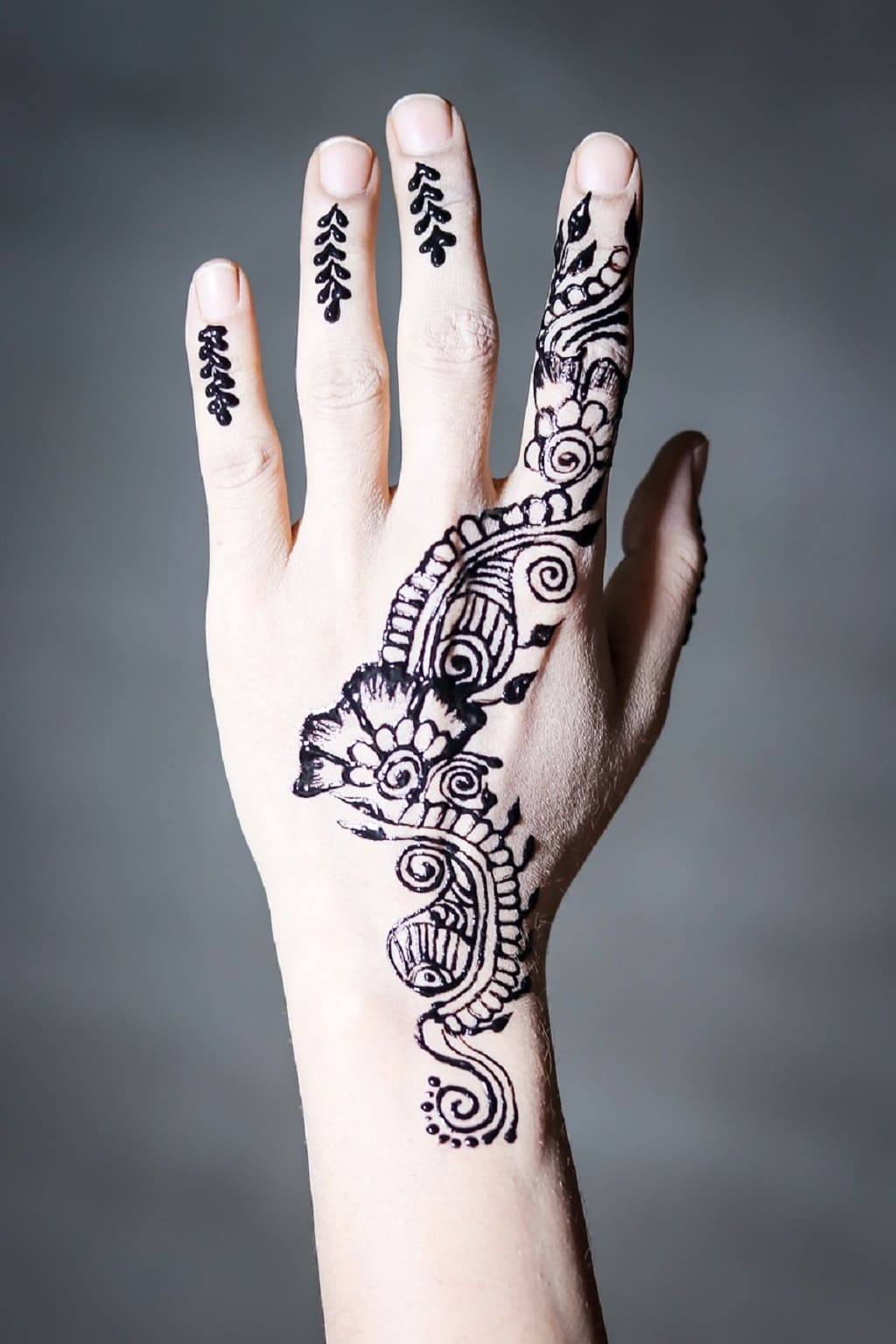
Geometric Shapes: Geometric shapes, such as squares, triangles, and diamonds, are frequently integrated into Arabic mehndi designs. These shapes add an element of symmetry and structure to the design.
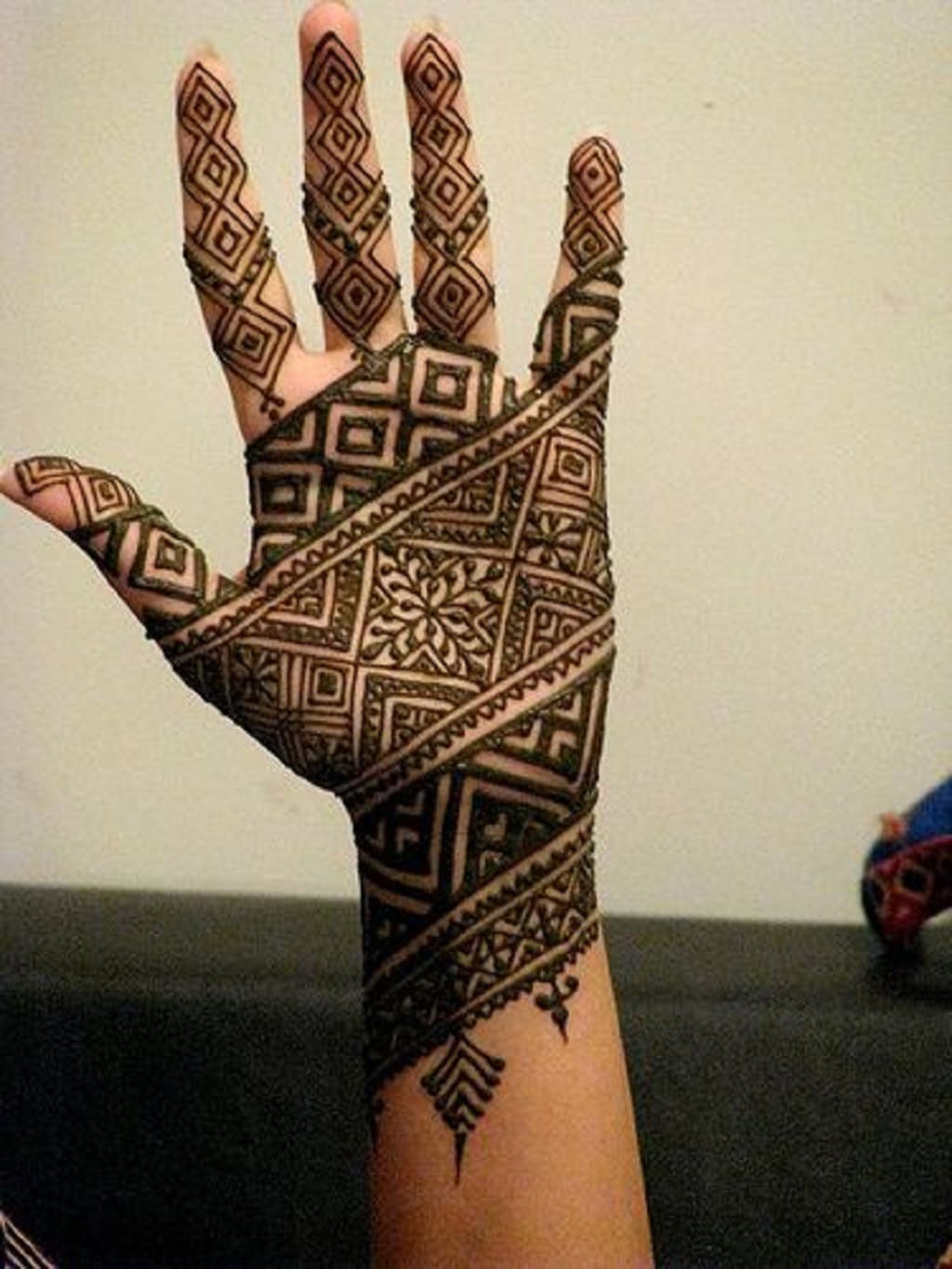
Leaves and Vines: In addition to flowers and geometric shapes, leaves and vines are used to connect various elements of the design. These natural elements add a sense of flow and continuity to the pattern.
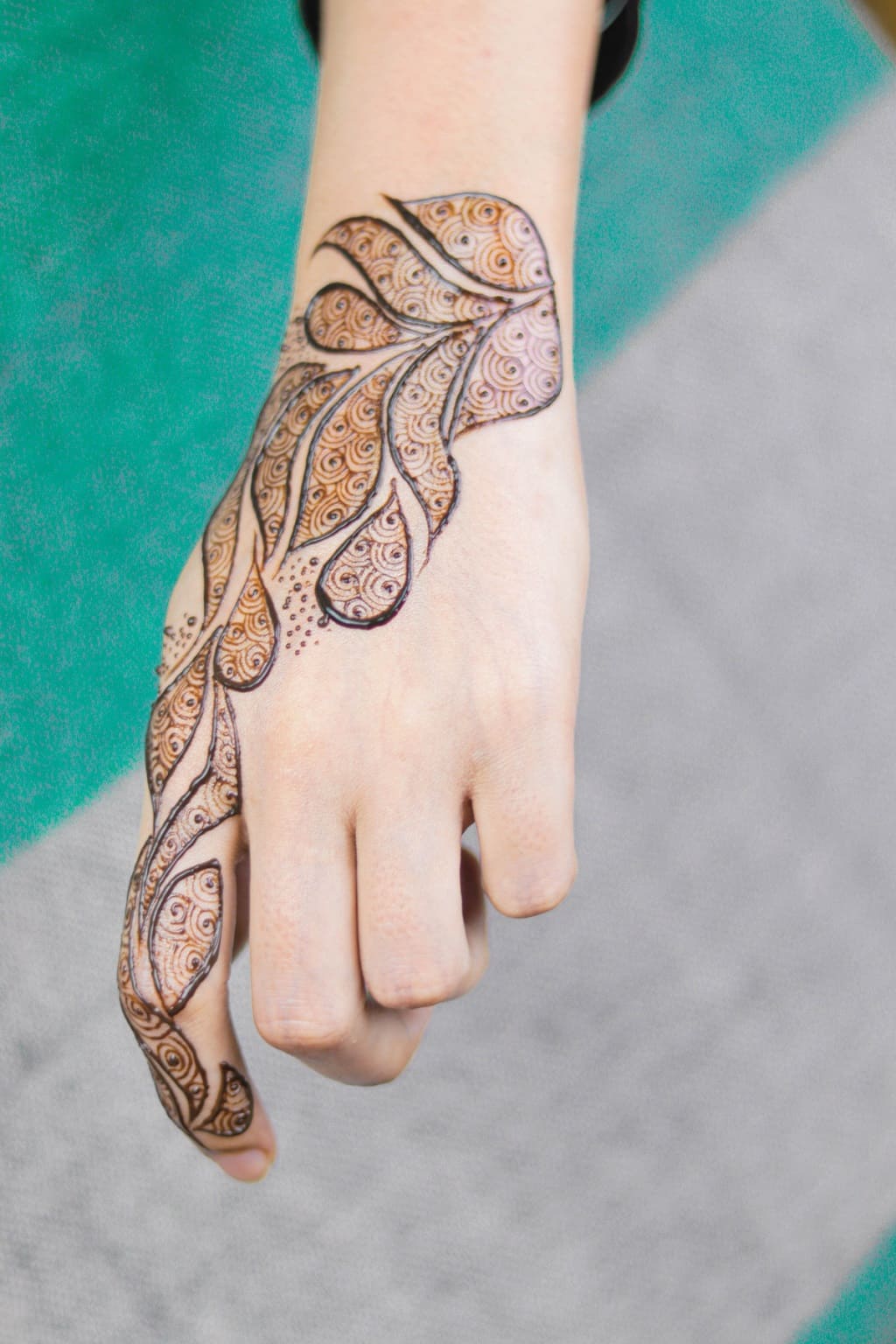
Peacocks: Peacock motifs are also common in Arabic mehndi designs. These elegant birds are often drawn with their feathers spread, creating a captivating visual effect.
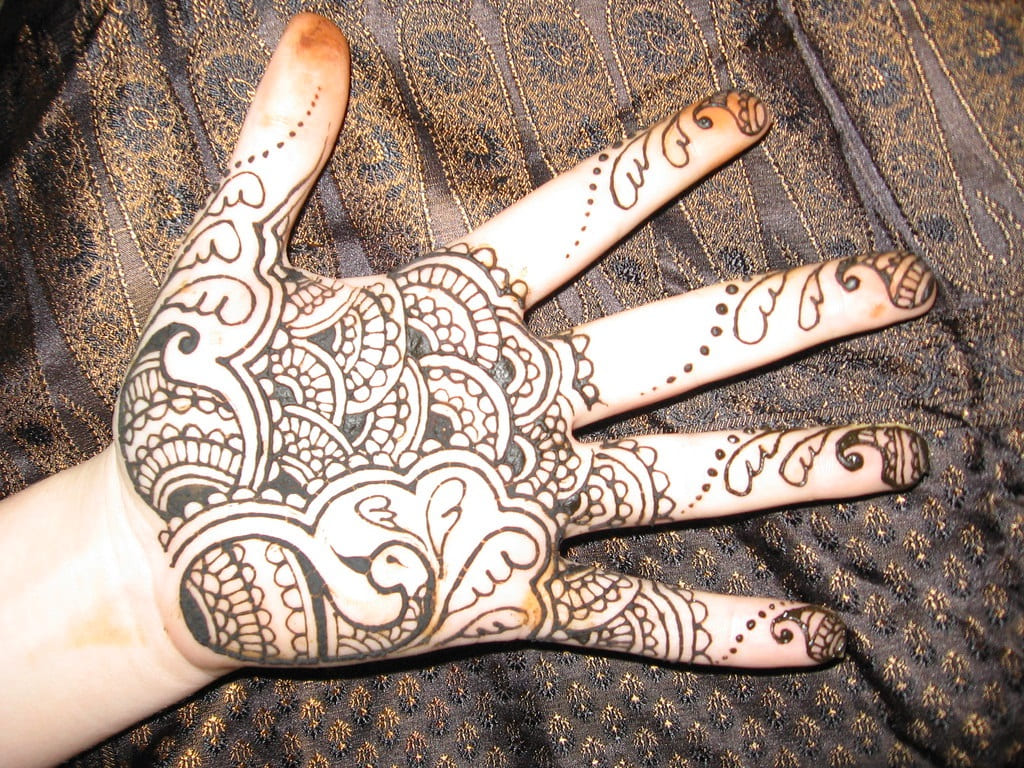
Negative Space: One of the defining features of Arabic mehndi is the use of negative space. Rather than filling the entire hand or foot with henna, Arabic designs often leave portions of the skin untouched, creating a striking contrast.
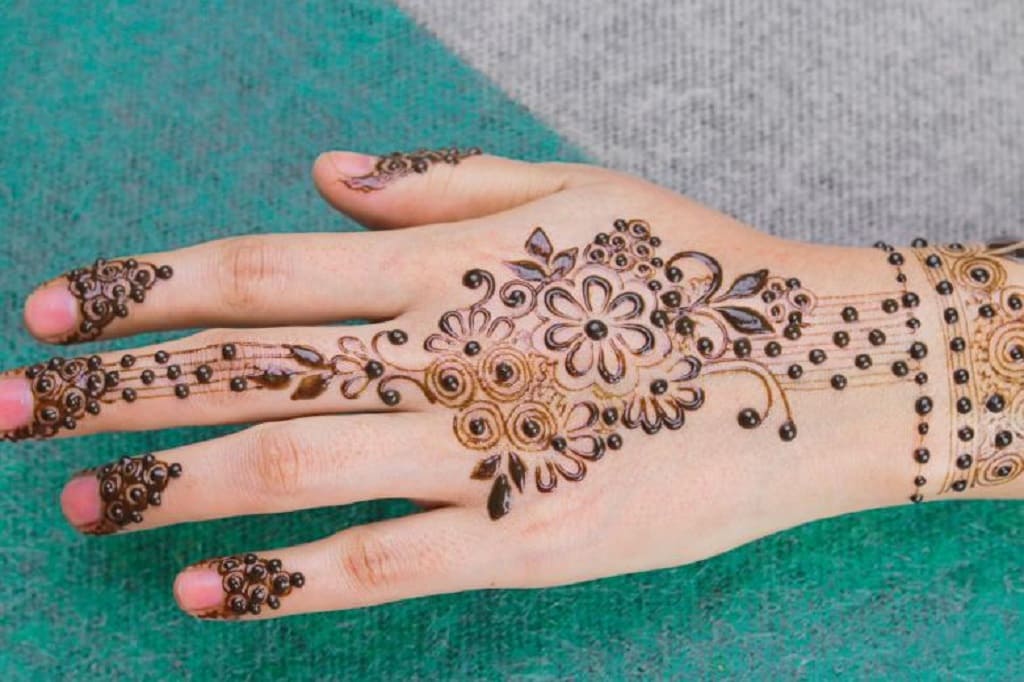
Fingertip Emphasis: Arabic mehndi designs often place a significant emphasis on the fingertips. The fingertips are usually heavily decorated, with intricate patterns and bold lines.
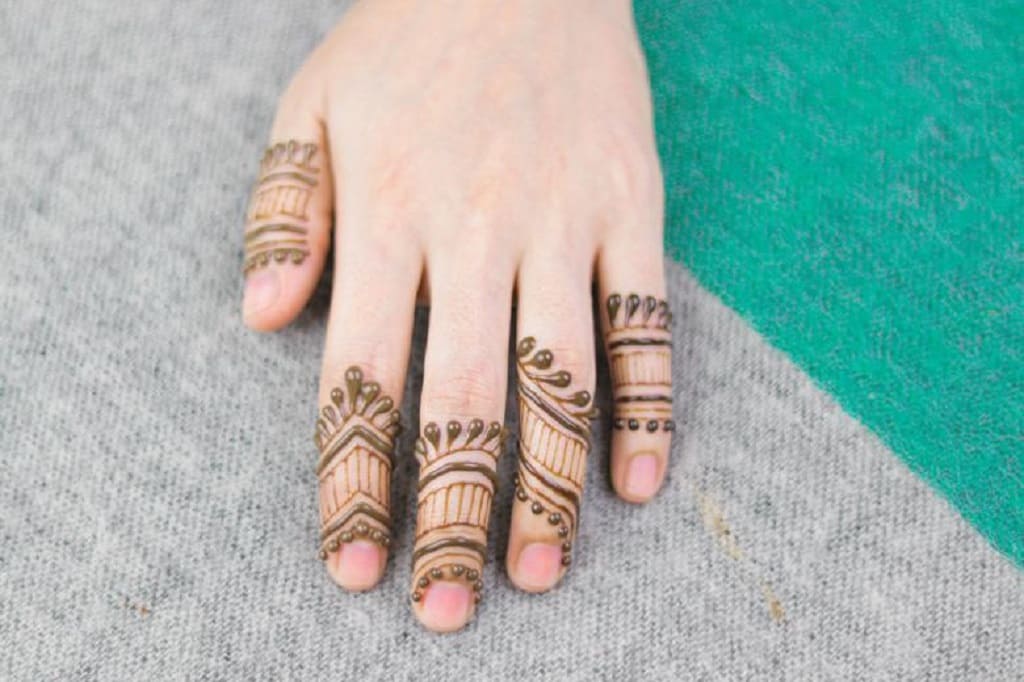
Simplicity and Minimalism: These designs tend to be less intricate compared to traditional Indian mehndi. The emphasis is on simplicity and minimalism while maintaining an overall aesthetic charm.
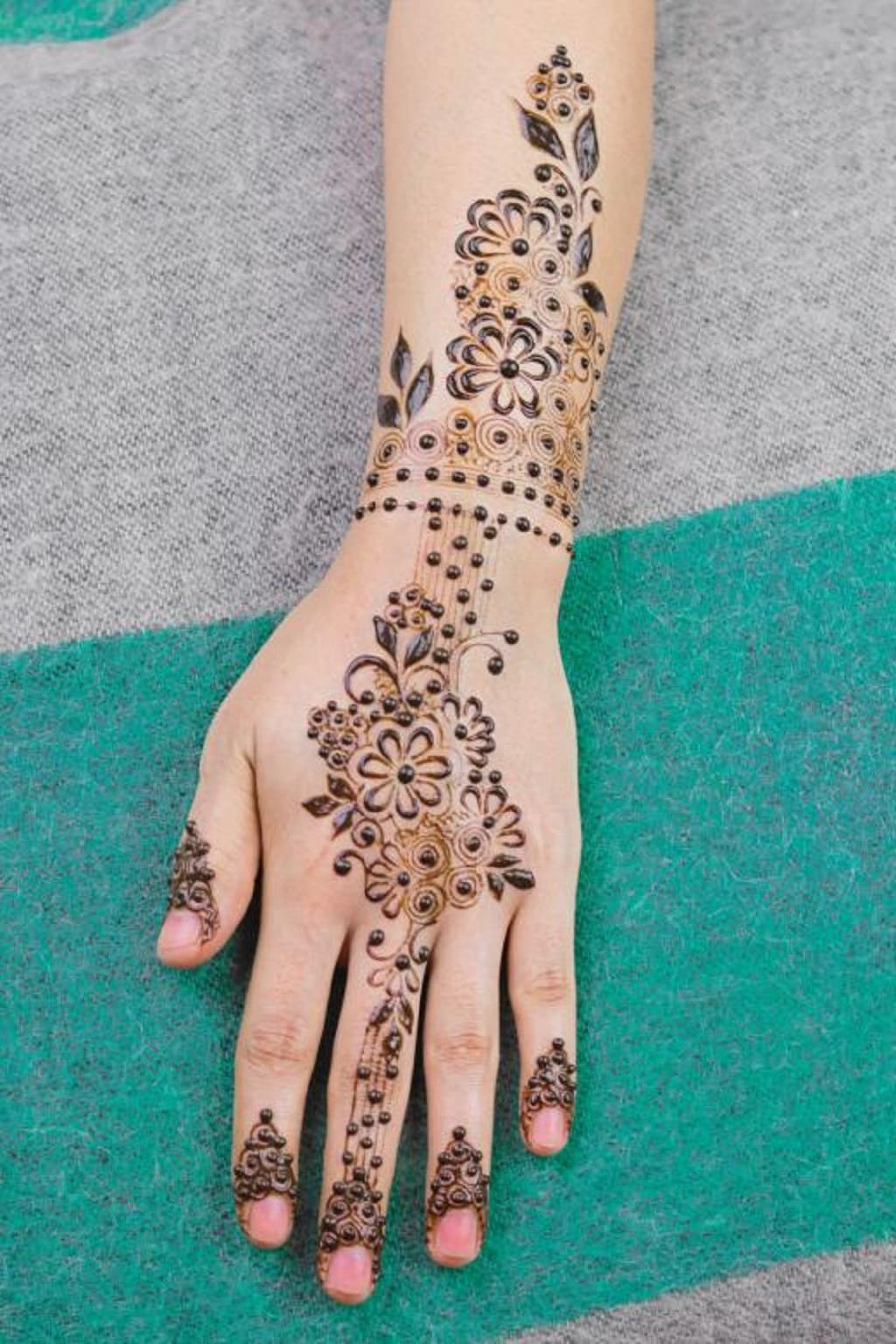
Contemporary Variations: In recent years, contemporary variations of Arabic mehndi have emerged. These designs may incorporate elements like glitter, colored henna, or even incorporate elements from other mehndi styles.
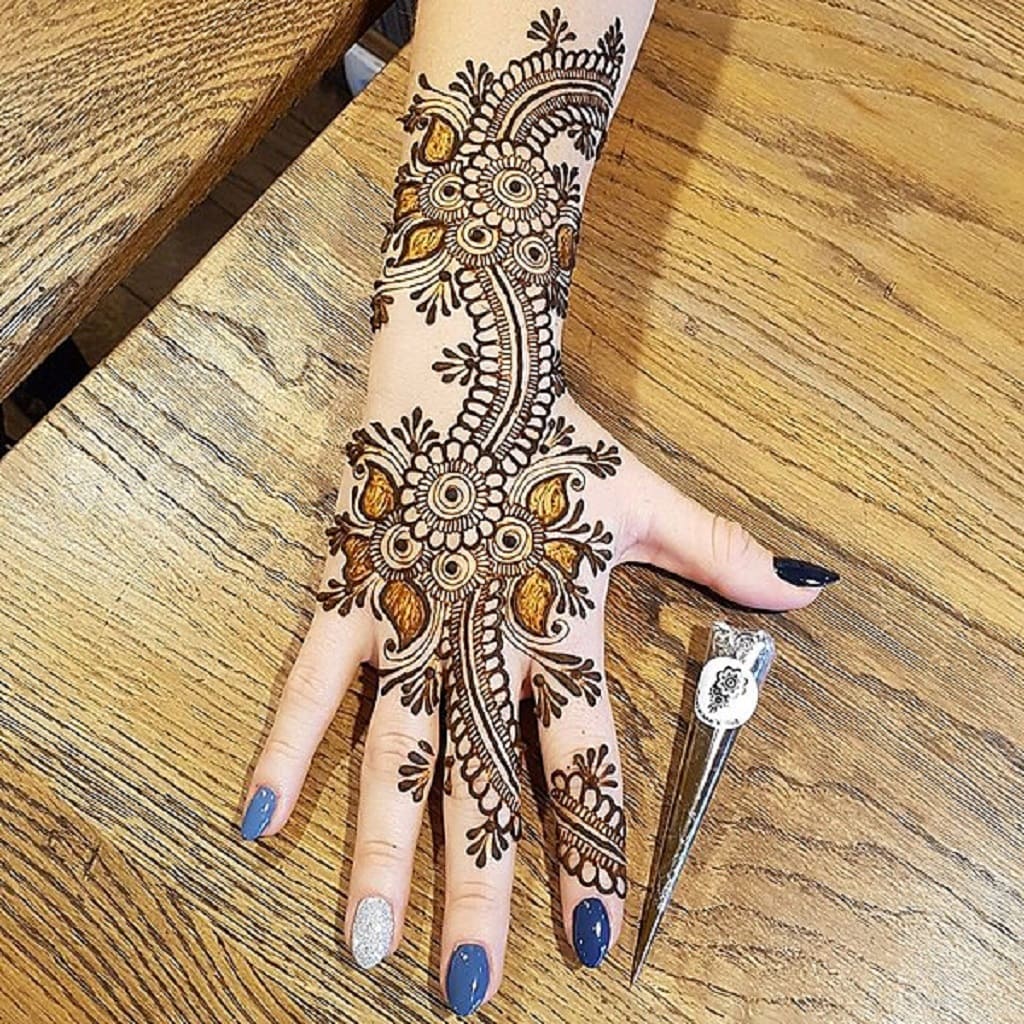
Arabic mehndi designs are versatile and can be used for various occasions, from casual gatherings to weddings. Their minimalist and elegant appeal makes them a popular choice for those who prefer a less elaborate and more modern look. Additionally, Arabic mehndi is often favored by individuals who want henna designs but do not want to commit to the extensive coverage that traditional Indian mehndi designs may require.
Arabic henna designs are not only the favorite of Indian women but also the top preference of Pakistani and Egyptian ladies as well. While some historians argue that henna was originated in the subcontinent of India, others say that it was brought to India by Egyptians in the 12th century. No matter where it might have originated, Indians have been applying mehendi since the beginning of times and have a huge significance towards it.
Mehendi in India is not just the art of drawing in one’s skin with graceful patterns, it has a lot of cultural as well as religious significance. Not only are they auspicious, but they are also considered a sign of good luck in Indian weddings. Women and even men in India apply mehendi on their arms and legs during their wedding to ward off the evil eye.
The most common Arabic mehndi include detailed floral patterns, leaf designs, paisley motifs, and circular mandala artwork. We have put together a list of different types of Arabic mehendi designs for some major artistic feels. Dive in and get the inspiration you were looking for!
Mehndi designs are more than just temporary body art; they are a reflection of culture, tradition, and the timeless beauty of India. The intricate patterns and motifs speak volumes about the rich and diverse heritage of the country. As mehndi continues to evolve, it maintains its status as a symbol of love, celebration, and artistic expression. In a world that is constantly changing, the tradition of mehndi remains a cherished link to Indias past and a canvas for creativity in the present.
Visit to Vishu Ladies Beauty Parlour beautician in and provide best salon services, including bridal makeup, mehndi, nail art , nail extension, waxing, threading, hair care, skin clean up, facial bleach, manicure, pedicure, party makeup, de-tan treatment and spa treatment.